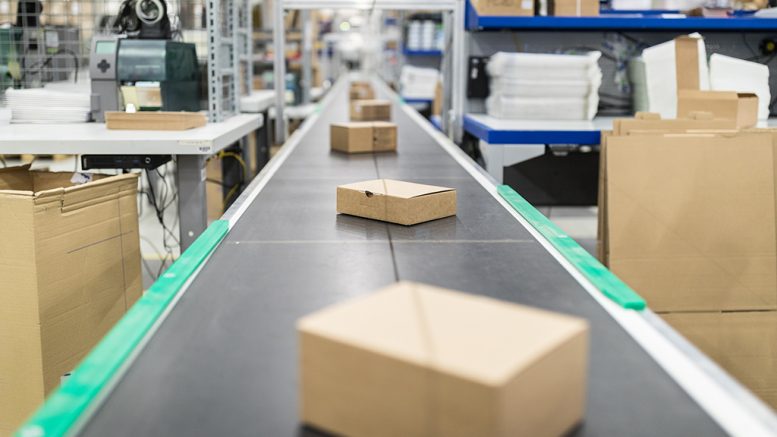As tempting as it is to opine about the Duke and Duchess of Sussex, and the Oprah Winfrey soap opera, there are rather more important things going on than the “truths” of Prince Harry and Meghan Markle. Used cardboard and rugby football, for example.
This month marks the 150th anniversary of the first-ever international rugby match. On March 27, 1871, we played Scotland in Edinburgh, and lost (as we did against them in London this year). Incidentally, did you know that, in addition to rugby, games invented by the British have included cricket, curling, darts, football (soccer), golf and baseball (or rather its ancestor, rounders). It is amazing that we found time to work!
Cardboard is also in the news this month. Booming on-line shopping during the Covid-19 pandemic has seen demand for packaging soar. The U.K.’s Confederation of Paper Industries warned in early March that “market conditions are extremely challenging.” The problems had started in October (ahead of Brexit and Christmas), according to the boss of packaging firm Rightbox Ltd, Axl Barber, but now “it’s really crazy.”
By mid-March, LetsRecycle.com was quoting the price for second-hand cardboard in England at £180 (US$250) per tonne, compared with a 12-year low of only £10 (US$14) per tonne at the start of the pandemic a year ago. And this isn’t just a British problem. Across Europe, theft of cardboard is rife as prices approach the record levels of 2011. There is big money to be made from this so-called ‘beige gold’, and thieves are taking revenue from the legitimate trade in recycled cardboard, which is expected to reach a global total of US$5.4 billion by 2024, up from US$4.3 billion in 2017.
This amount is “small beer” compared with the latest valuations in Silicon Valley, where the pandemic continues to drive equity prices higher. In February, investors ploughed US$460 billion into private start-ups, an amount that data provider PitchBook says is 40% higher than the recent peak in 2018. The increase stems from the success of on-line trading and financial-software companies during the pandemic, epitomised by Stripe’s recent financing that valued the 11-year-old on-line payment company at US$95 billion.
Encouragingly for cardboard thieves and Silicon Valley investors, the impact of Covid-19 is not going away anytime soon. Pandemics do not actually end when the disease is eradicated, but when deaths have returned to normal rates. This concept of ‘excess deaths’ was developed in England by John Graunt in the early 1660s.
In Europe, we’ve had plenty of experience of excess deaths. In 1347-51, for example, the Black Death (a bubonic plague) killed 34% of the continent’s population. Globally, the Spanish Flu of 1918-19 killed an estimated 2.4% of the world’s population. In contrast, Covid-19 has so far killed barely 0.03% of the world’s 7.8 billion people.
In examining London’s Bills of Mortality (weekly burial statistics that were collected from 1592 to 1595, and then continuously since 1603), Graunt developed early human statistical and census methods that provided a framework for modern demography. He is credited with producing probabilities of survival for each age group. Graunt was subsequently bankrupted by losses suffered during the Great Fire of London (September 1666) and by the discrimination he faced following his conversion to Catholicism.
Although the impact of the pandemic is far from over, Covid-19 infection rates are slowing. Helped by loose monetary and financial conditions, the global economy is strengthening. This has been particularly apparent in China, where Beijing has shifted its focus from foreign to domestic demand to power the economy.
An emphasis on China’s consumer industries fuelled an internal investment frenzy in February. Domestic mergers and acquisitions in the country have totalled US$78 billion in the first two months of 2021. This is the busiest ever deal-making start to the year, according to Refinitiv, and three-times the level of the Covid-impacted start to 2020.
With China’s financial-stimulus spending centred upon infrastructure, and the world shifting towards clean-energy solutions, the demand scenario for copper looks extremely robust.
Although consumption of the red metal is soaring, supplies are restricted as copper inventories are near 15-year lows and, of course, new mines take years to come to fruition. As a result, copper has been one of the best performing metals of the past year, with the price almost doubling.
By mid-March, the industrial metal had risen to US$4.14 per pound (US$9,100 per tonne), compared with only US$2.17 per pound 12 months ago. Copper is now trading at its highest level for 10 years, and many analysts are predicting that the price will break the all-time high of US$4.65 per pound achieved in February 2011.
The lucky amongst you will have invested in copper a year ago, and stored it in a cardboard box.
— Dr. Chris Hinde is a mining engineer and the director of Pick and Pen Ltd., a U.K.-based consulting firm he set up in 2018 specializing in mining industry trends. He previously worked for S&P Global Market Intelligence’s Metals and Mining division.


Be the first to comment on "The View from England: Copper has been a stand-out price performer during the pandemic, as has cardboard"